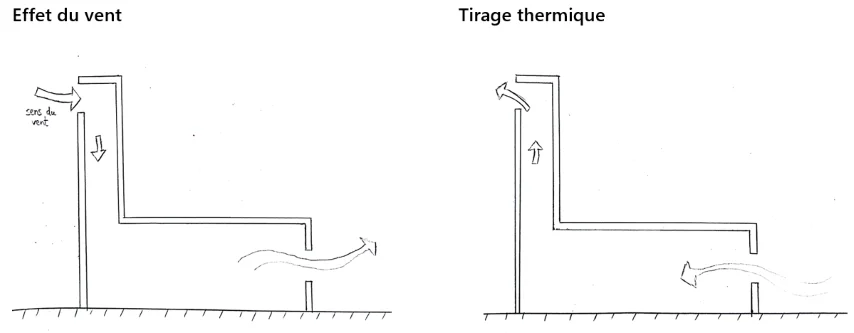Wind Towers and Natural Ventilation 💨
After an initial internship conducted by Caroline REST in 2020, laying the foundations for tools to simulate wind towers, Ghadi Zaidan’s end-of-study internship (2023) allowed for exploring the potential of wind towers with the aim of enhancing natural ventilation and thermal comfort, with a particular focus on applicability in French climates.
Air Change Rates and Comfort
Thermal Draft vs. Wind Draft

The operation of a wind tower is governed by the two physical principles of natural ventilation: the effect of the wind and thermal draft. These two principles strongly depend on external conditions such as wind direction and speed, as well as the temperature difference between the inside and outside of the building. They allow for the intake of fresh air either from the top or the bottom.
For wind speeds below 2 m/s, thermal draft dominates, beyond that, it is the wind draft.

Where does it work?
A generic geometry was tested in 22 French cities, both with and without a wind tower, and the gains in terms of summer comfort (up to 74%) and air renewal (up to 500%!) were studied.
Although the configuration with a wind tower shows slight advantages everywhere, it is in the hot Mediterranean-type climate where one can make the most of its benefits.

Best Practices:
A sensitivity study has defined the criteria for the proper functioning of systems with a wind tower. They can be summarized in 5 points:
- Suitable climate: a warm Mediterranean-type climate.
- Well-oriented building with respect to dominant winds.
- Good thermal inertia.
- Low building opening ratio.
- Adequate dimensions of openings.